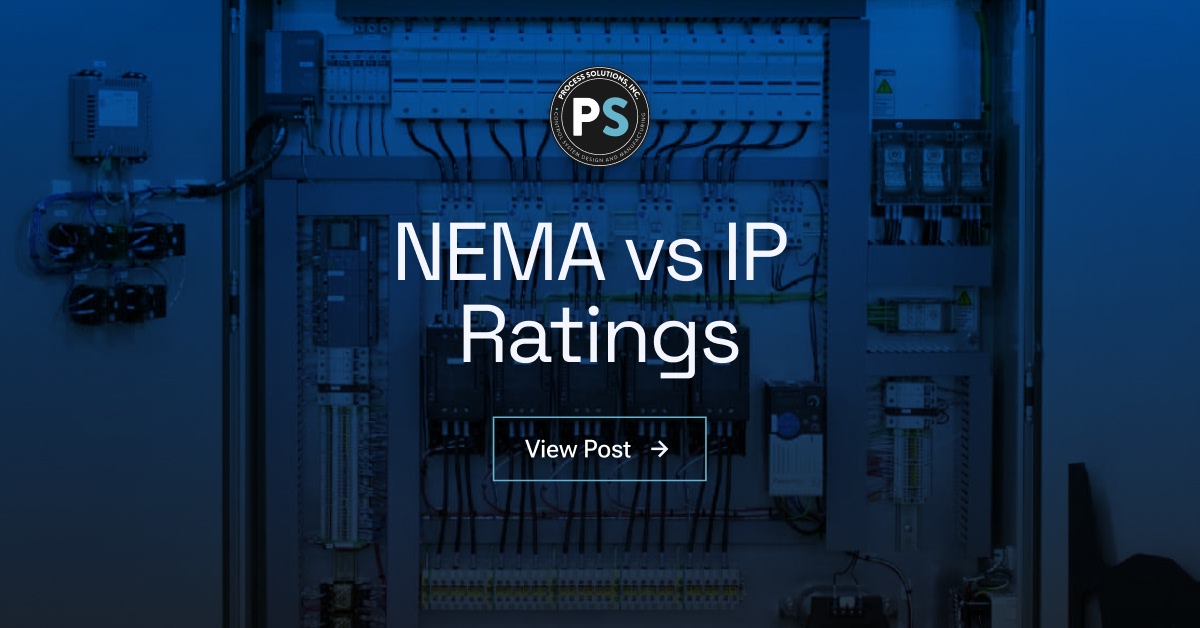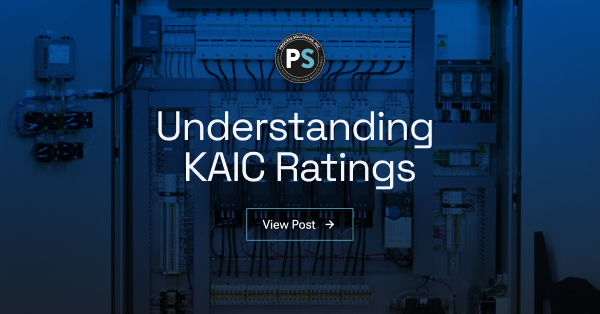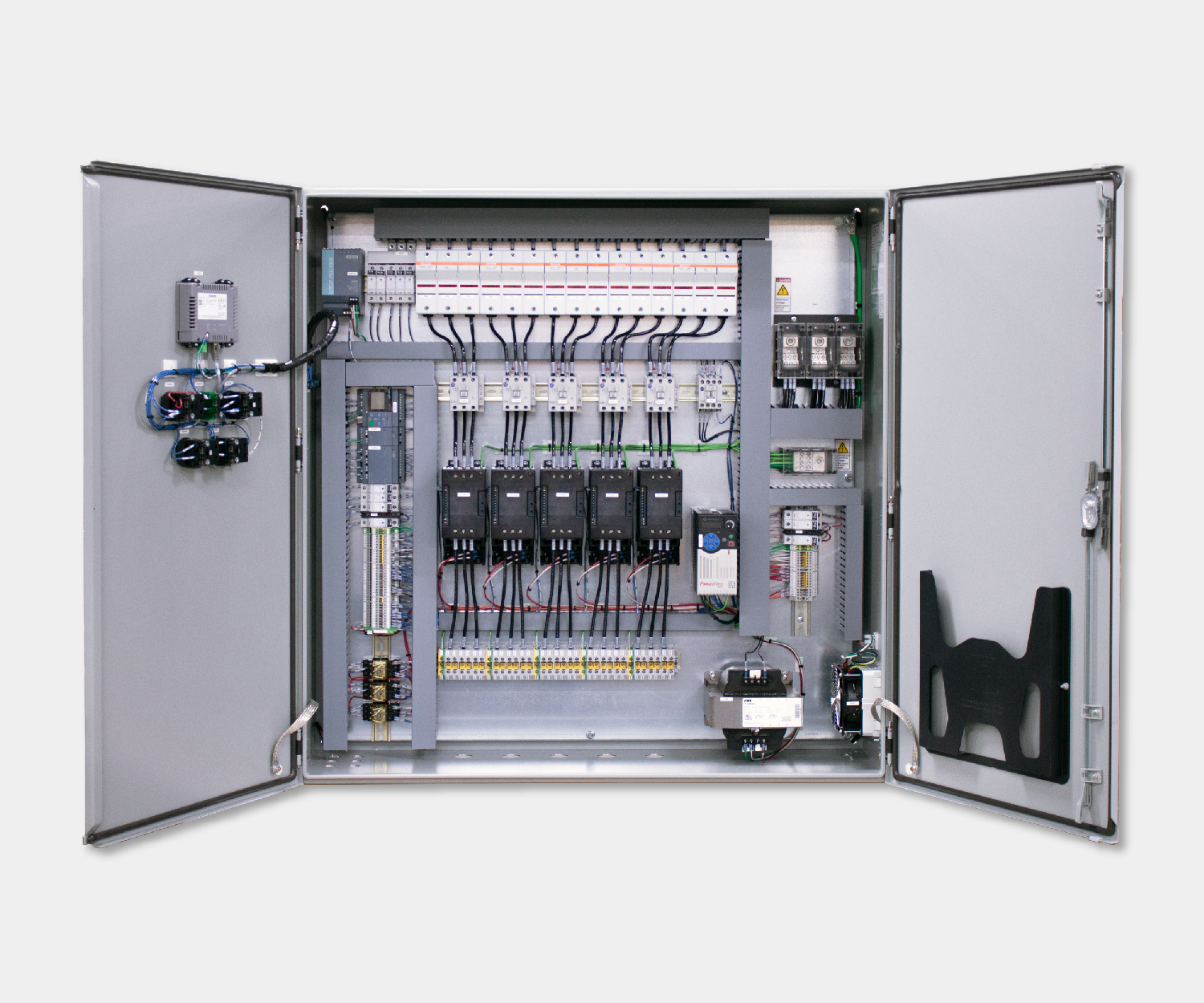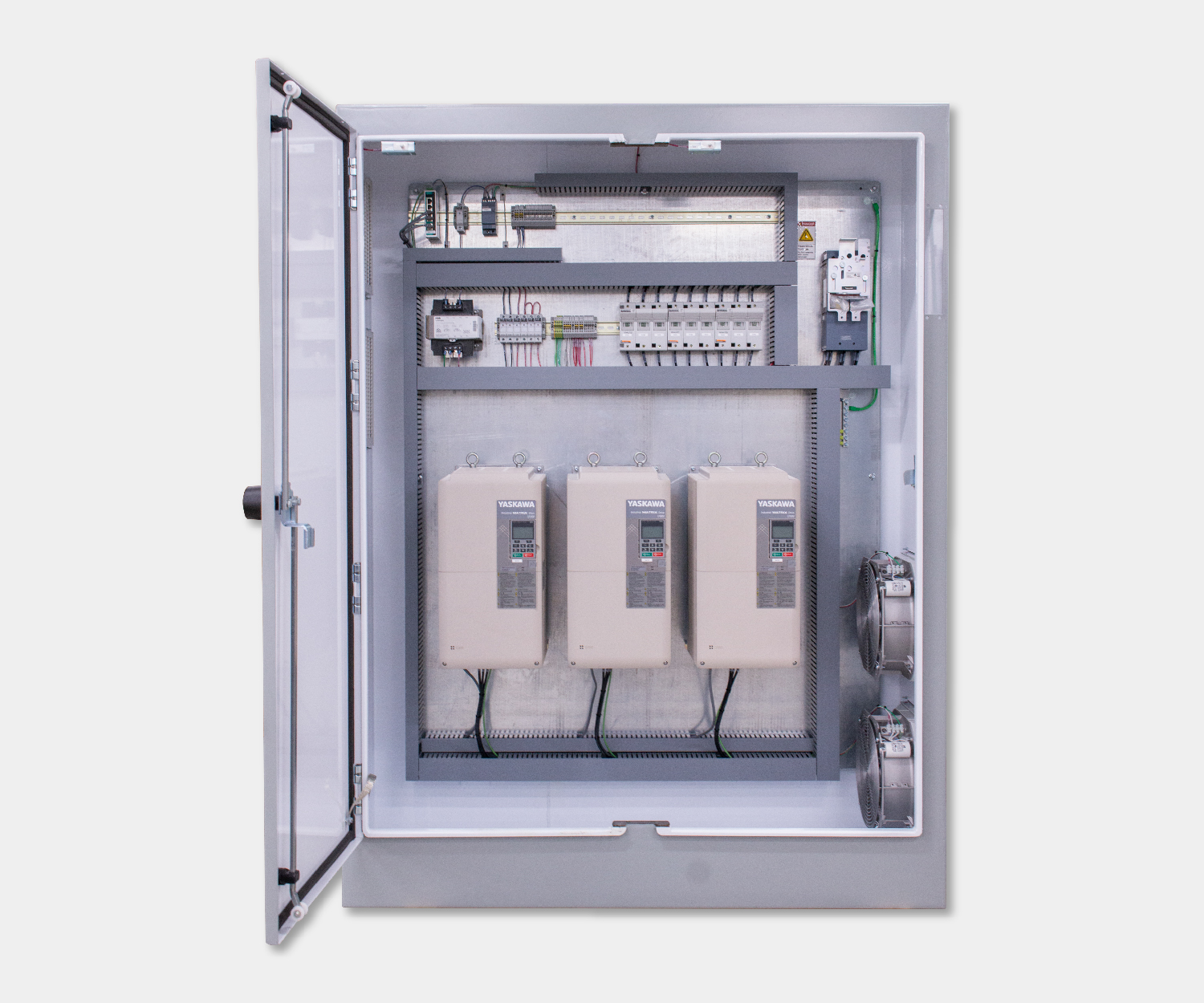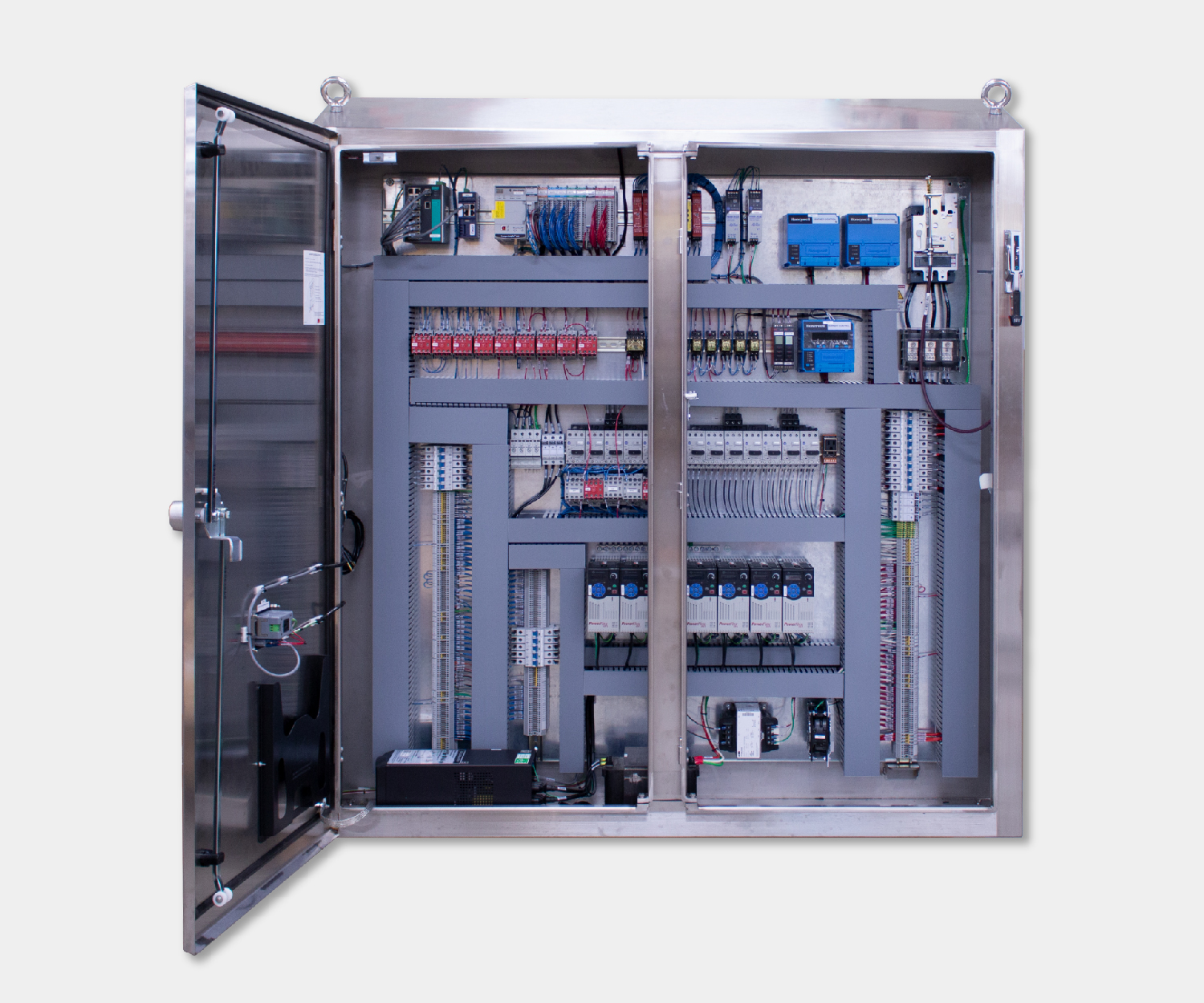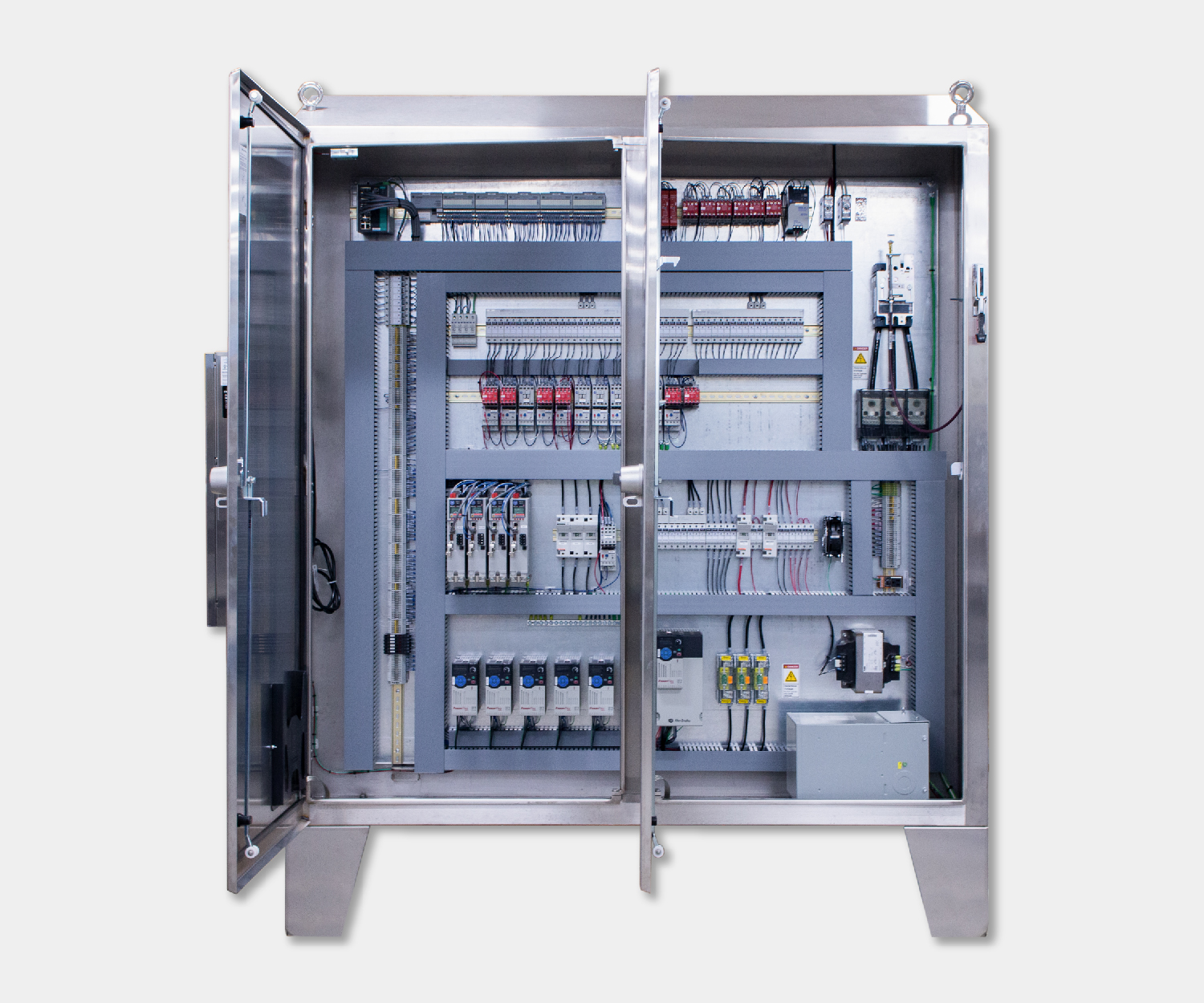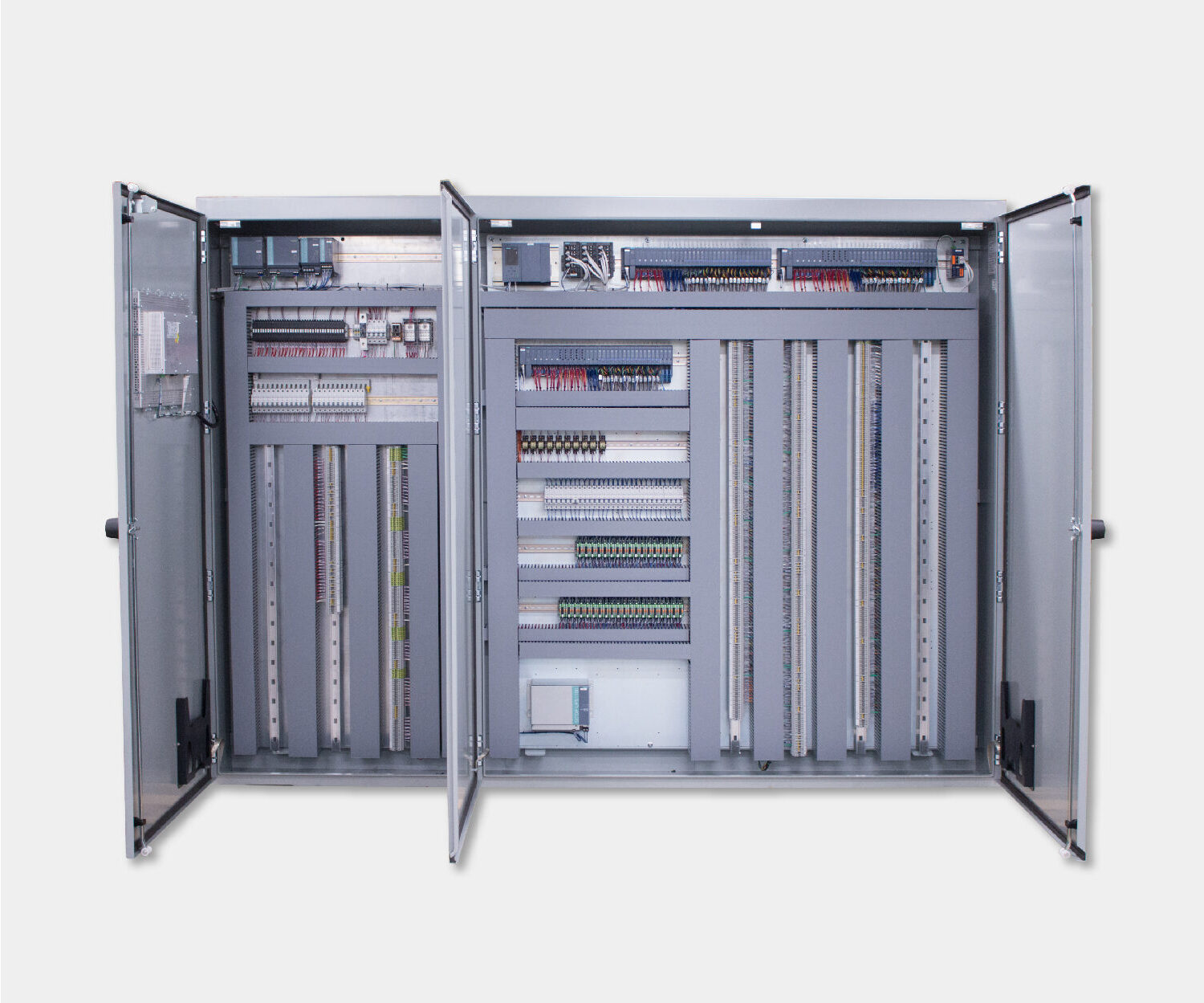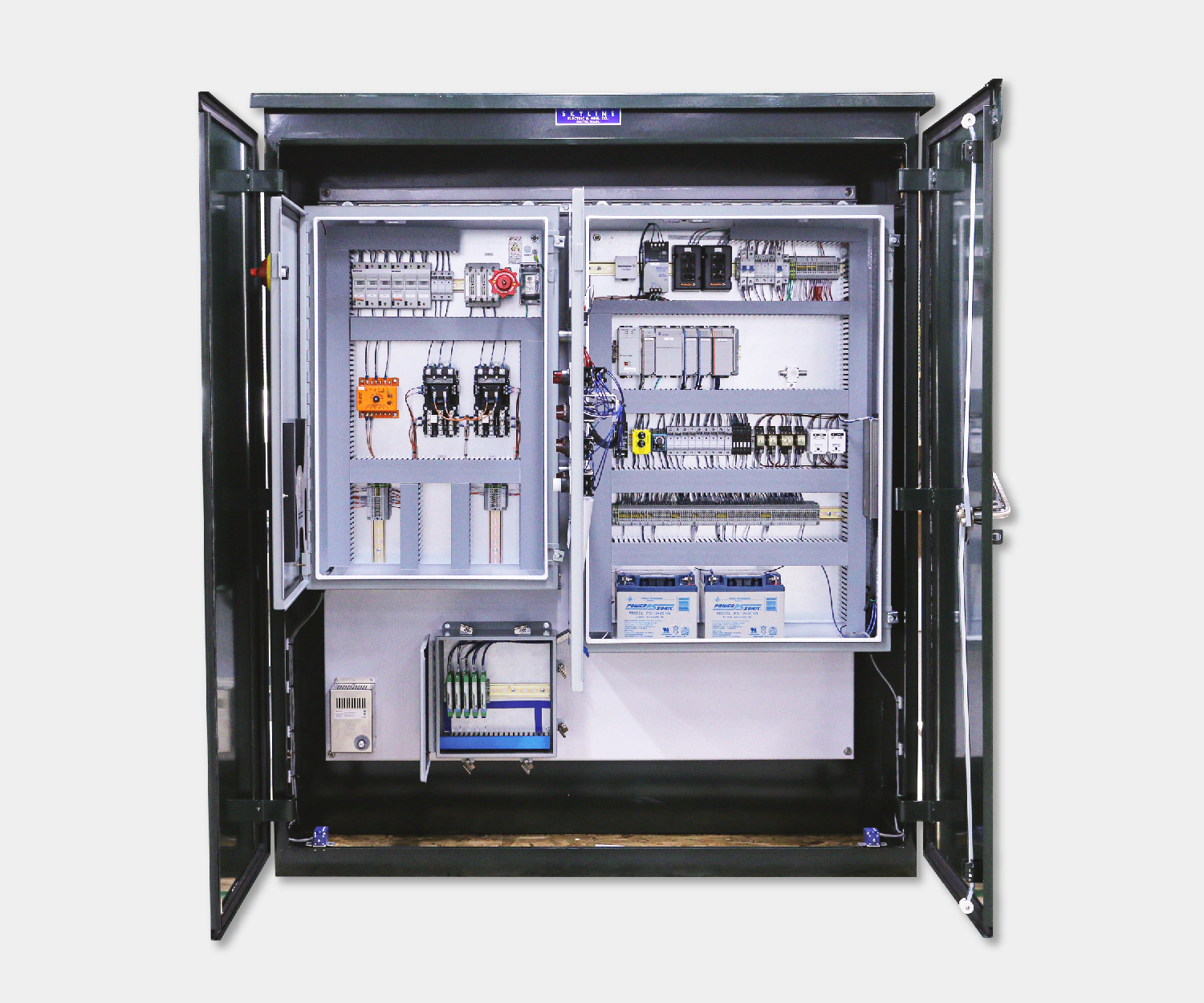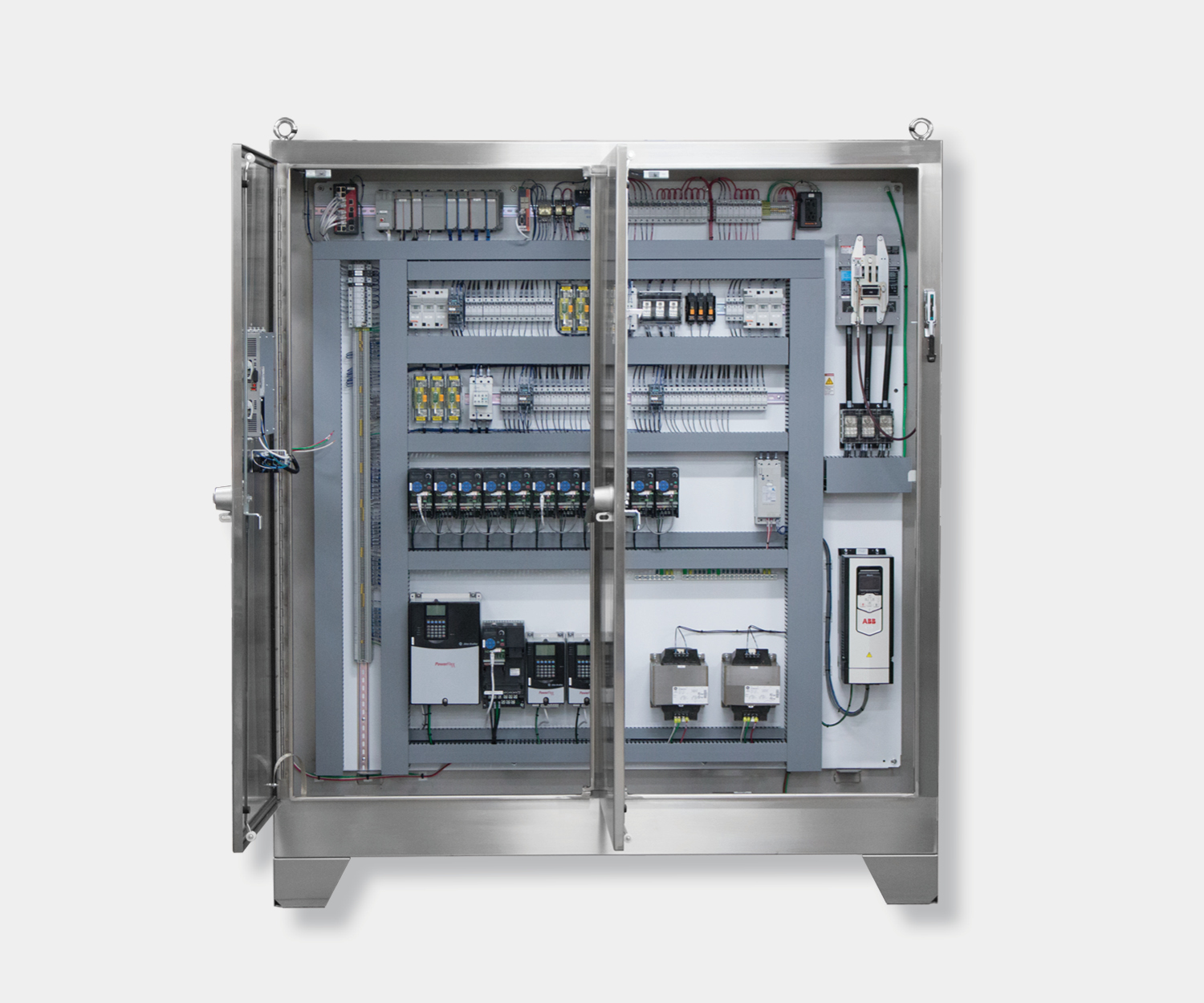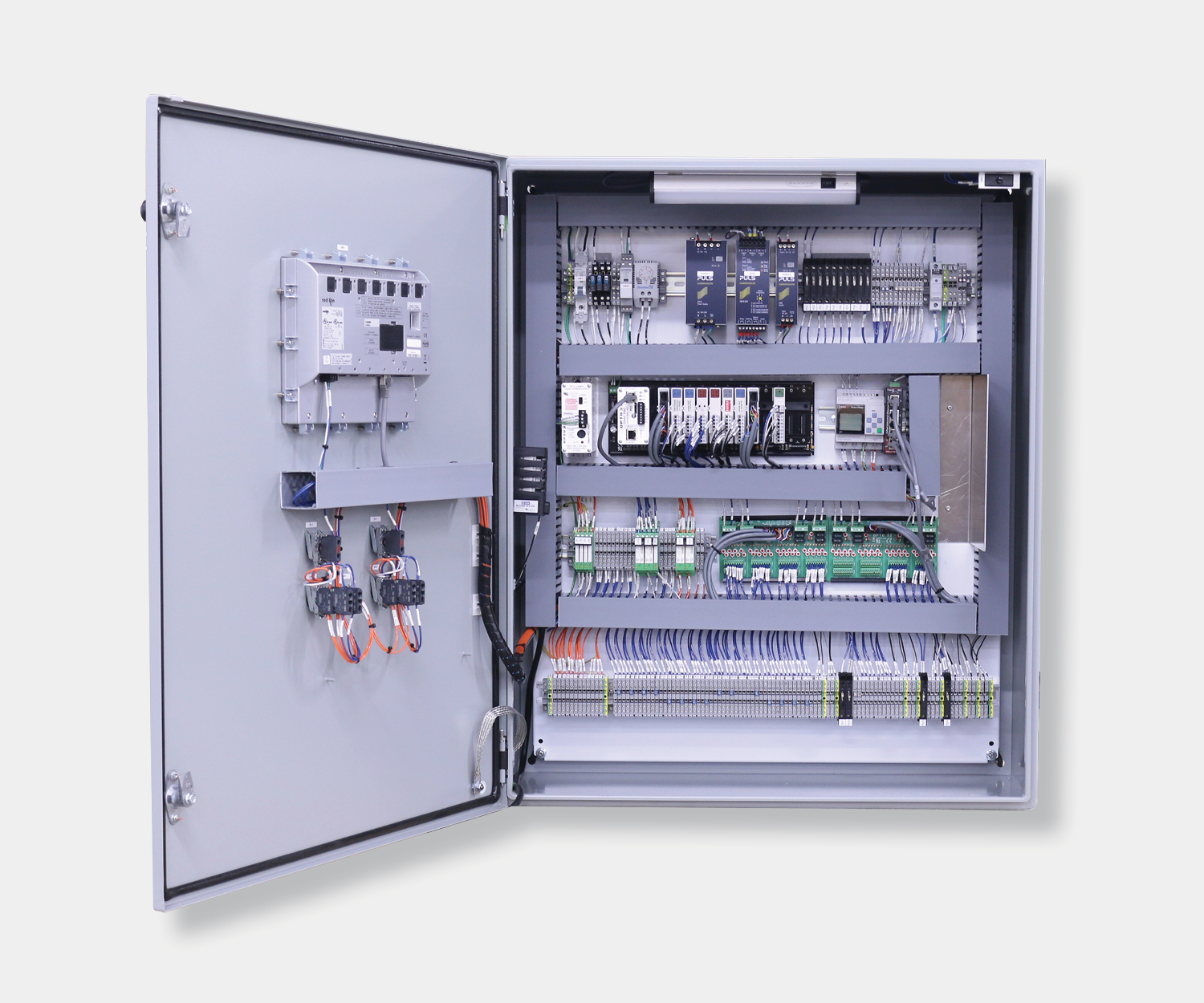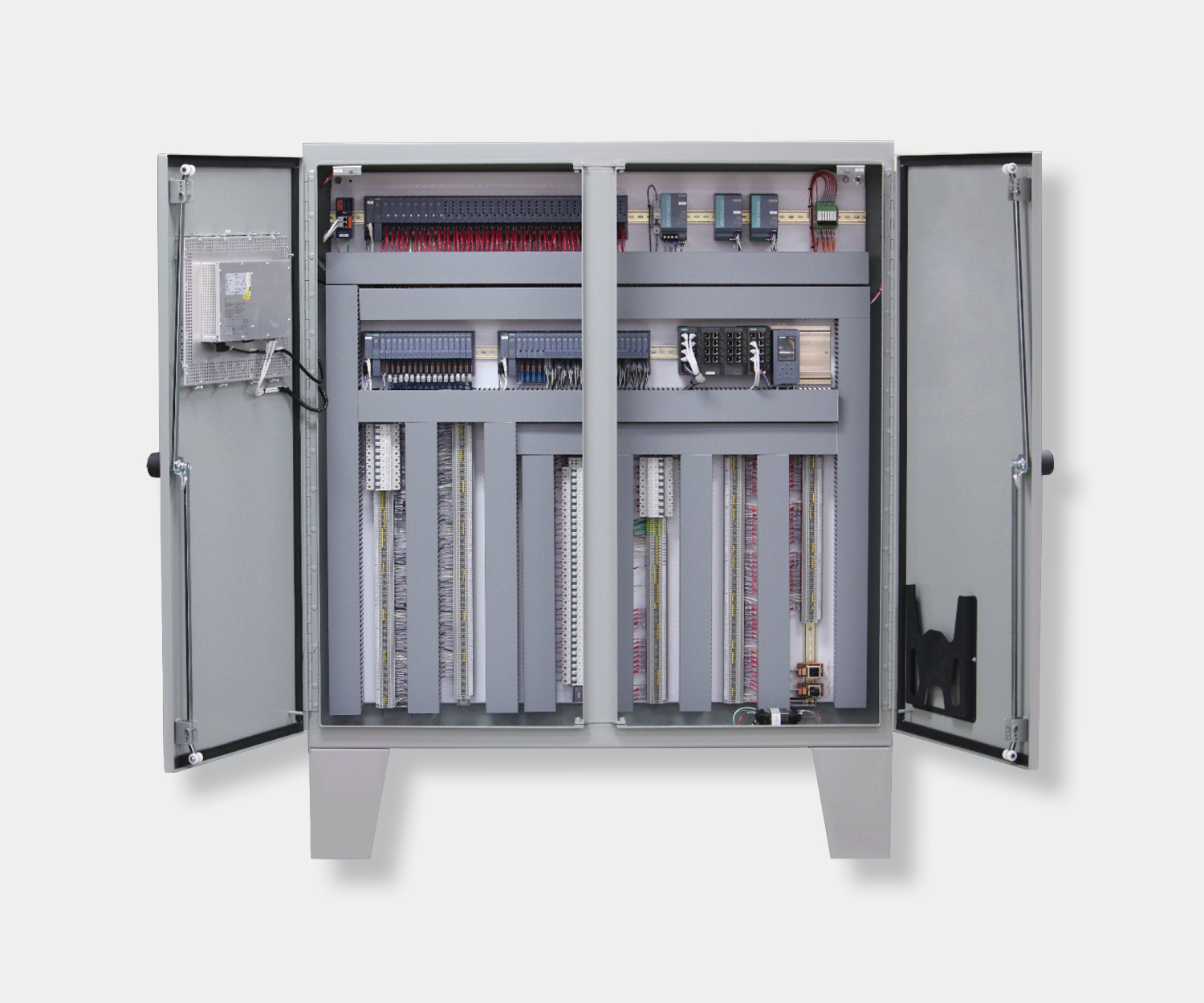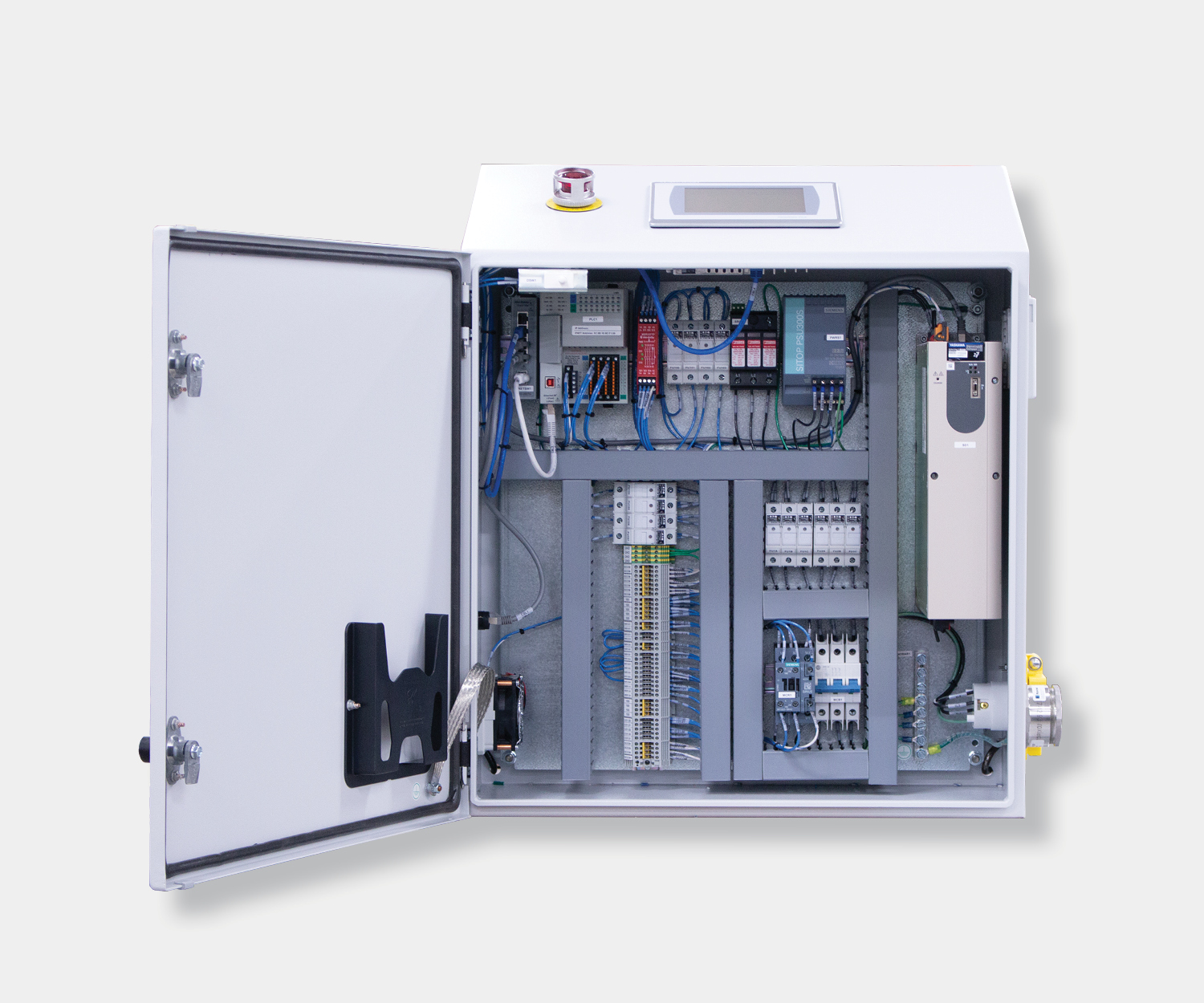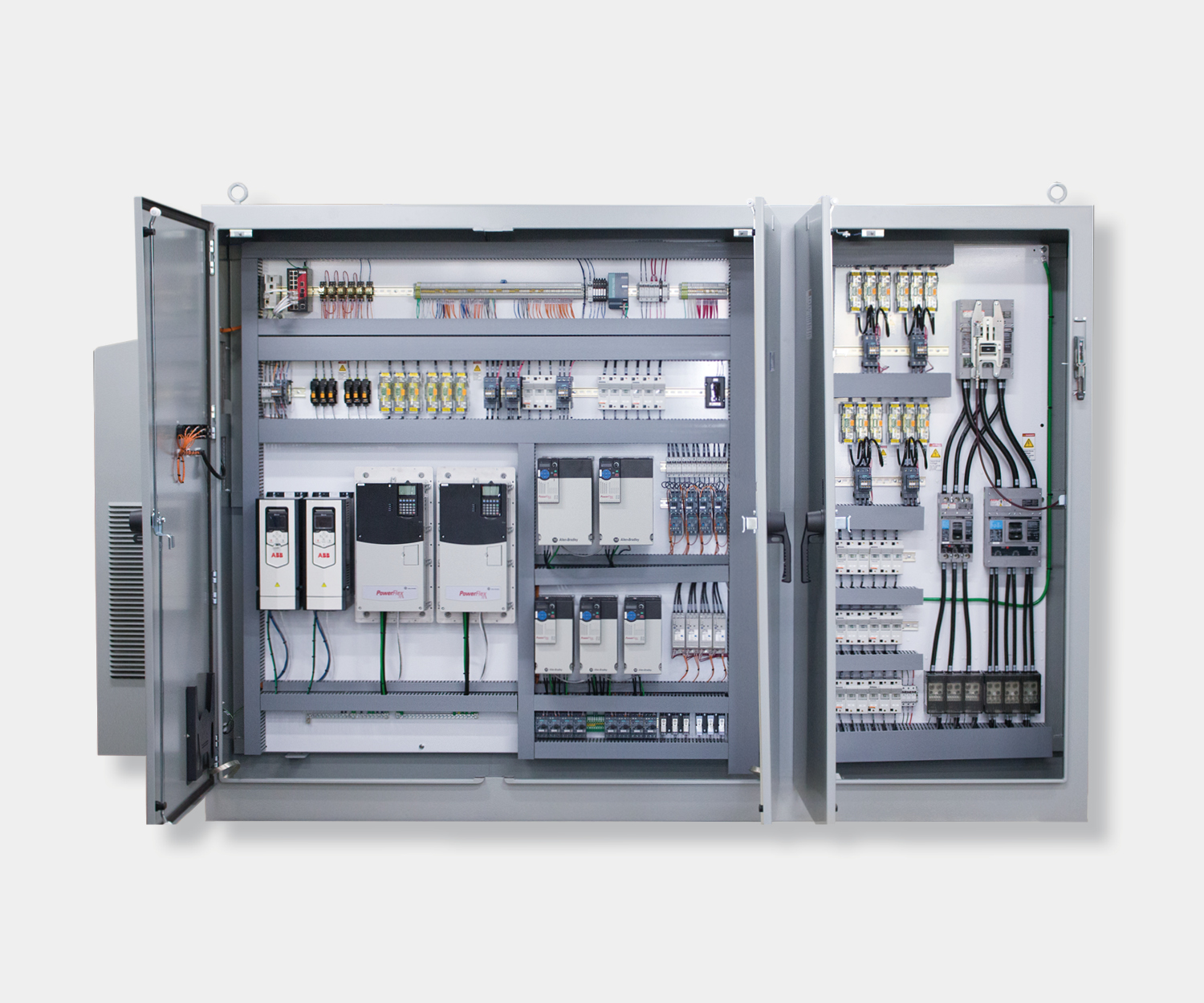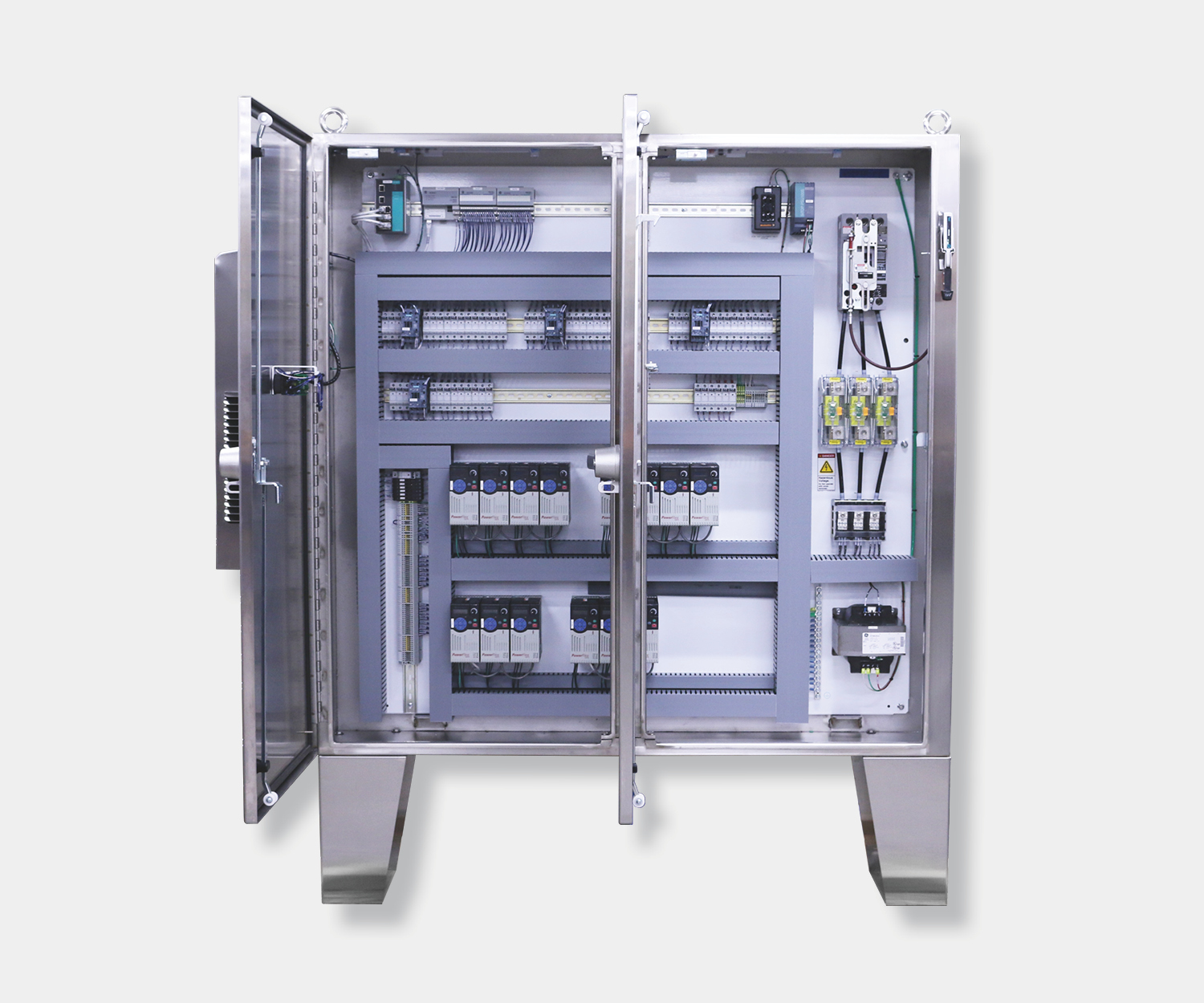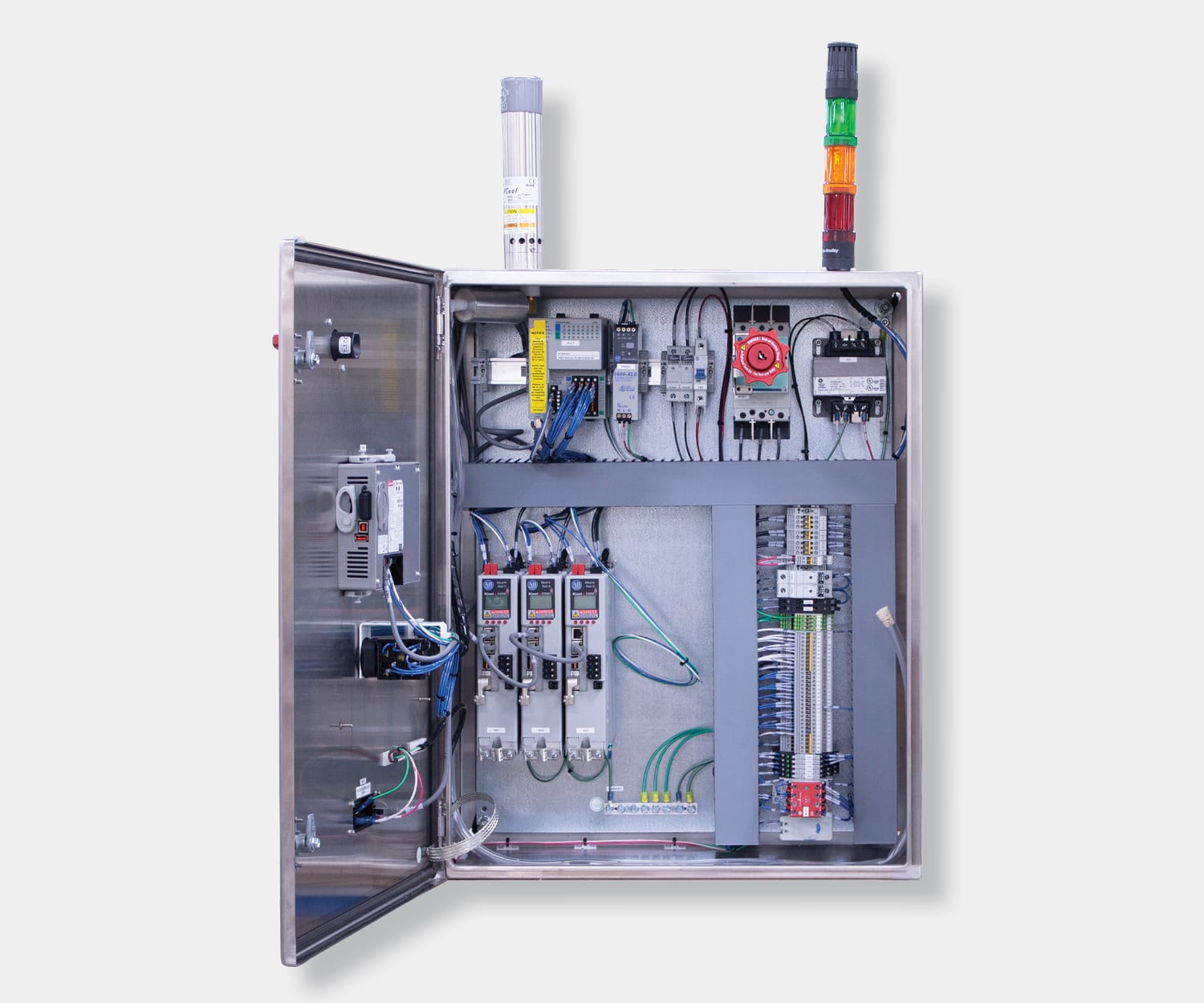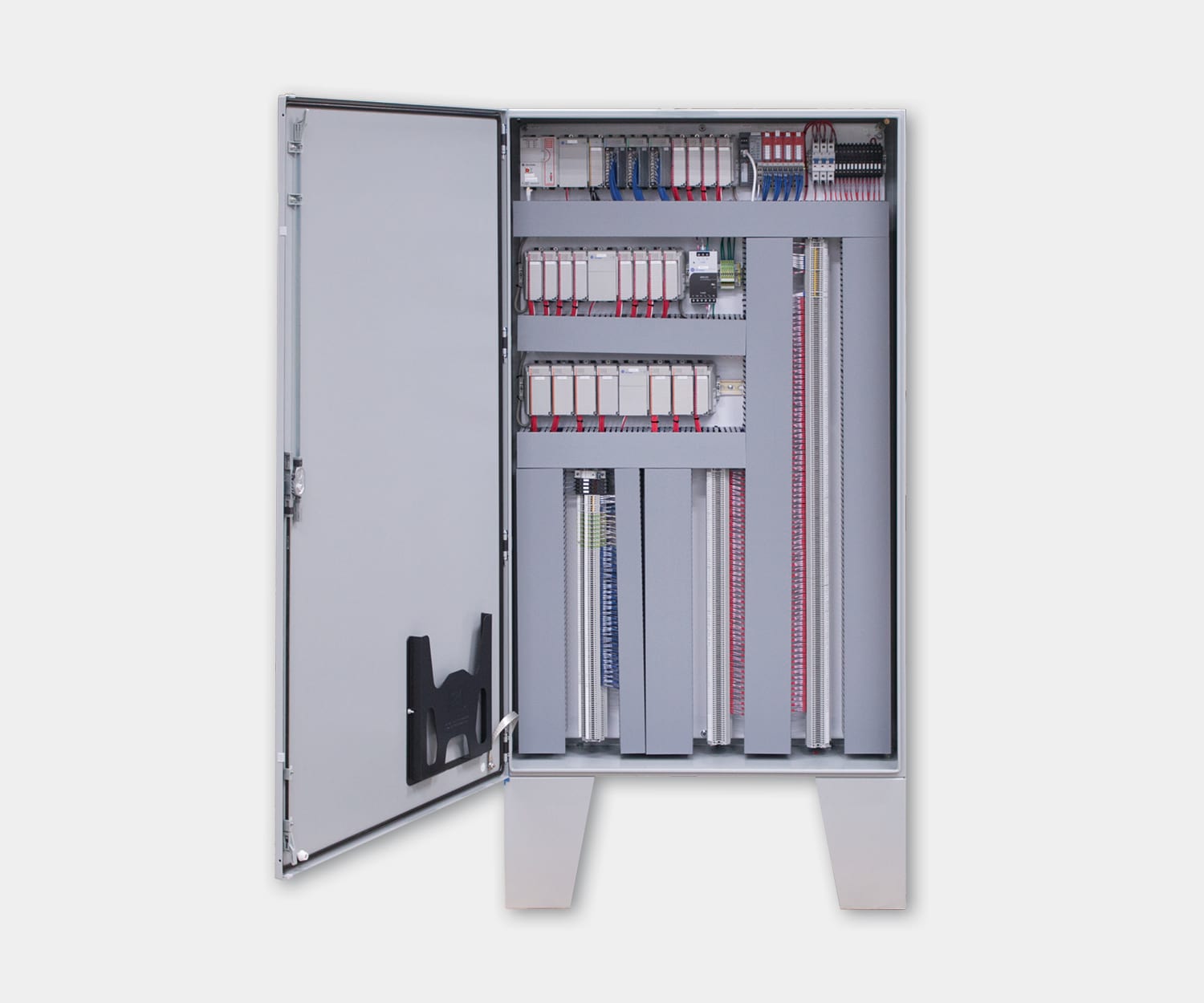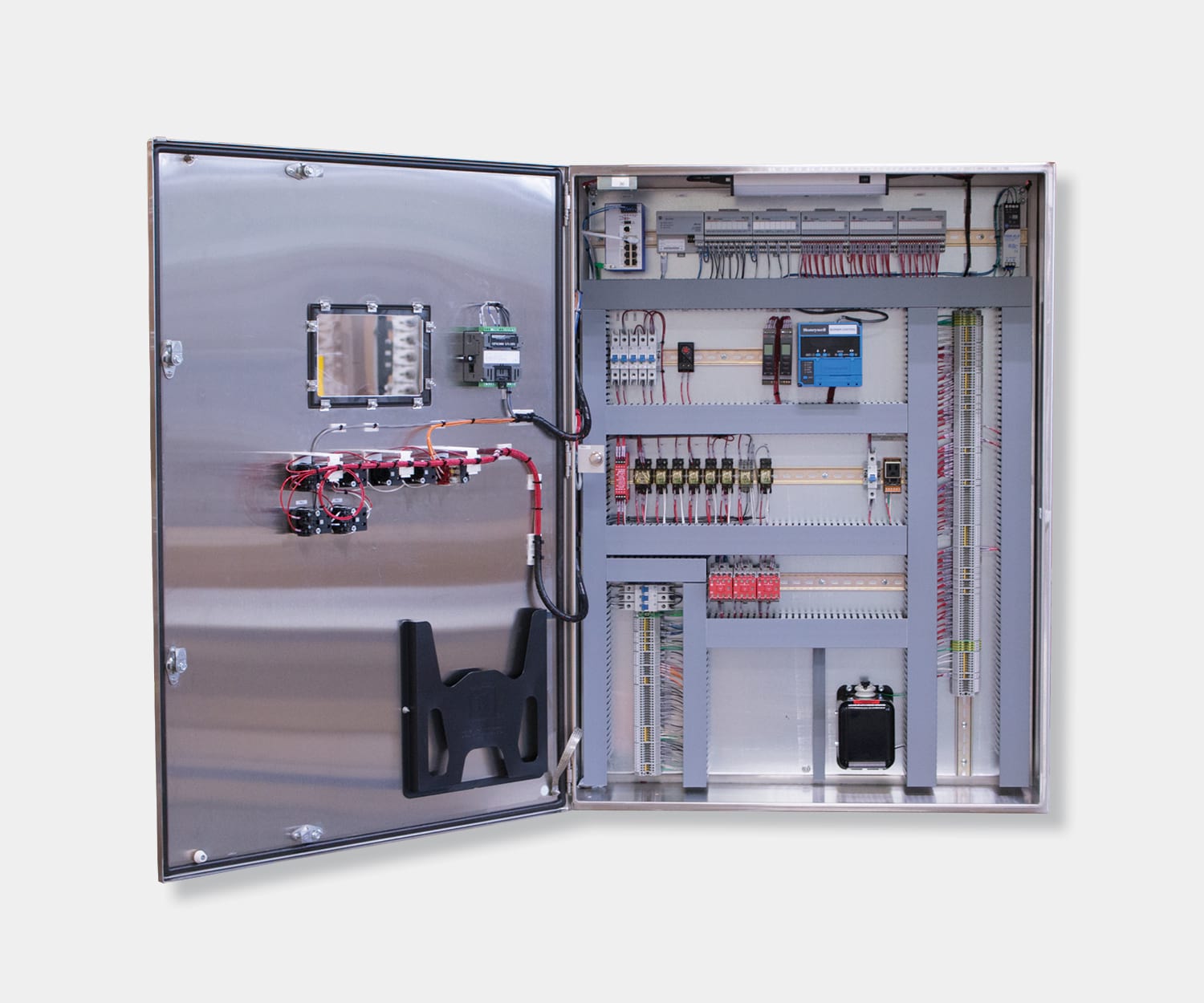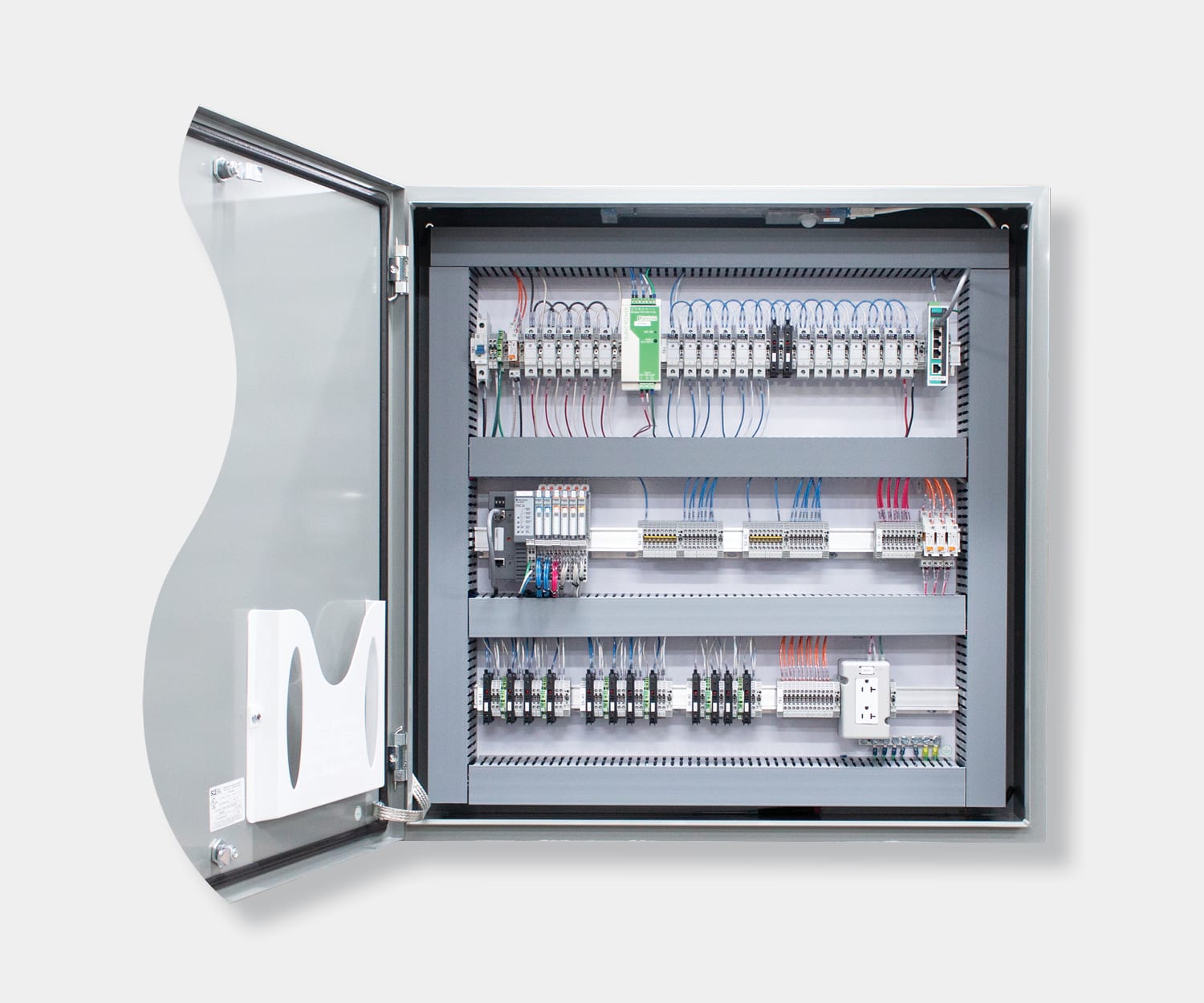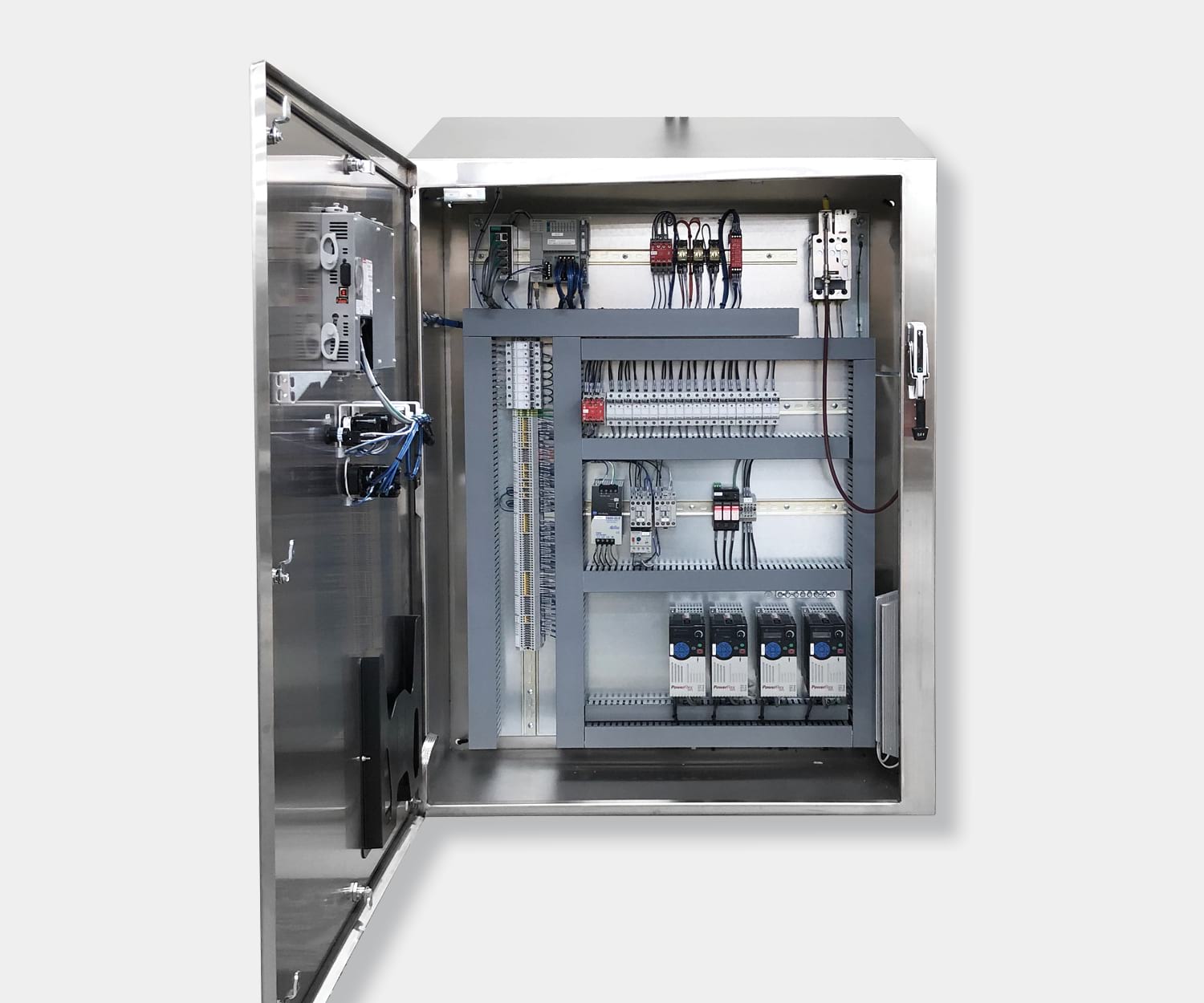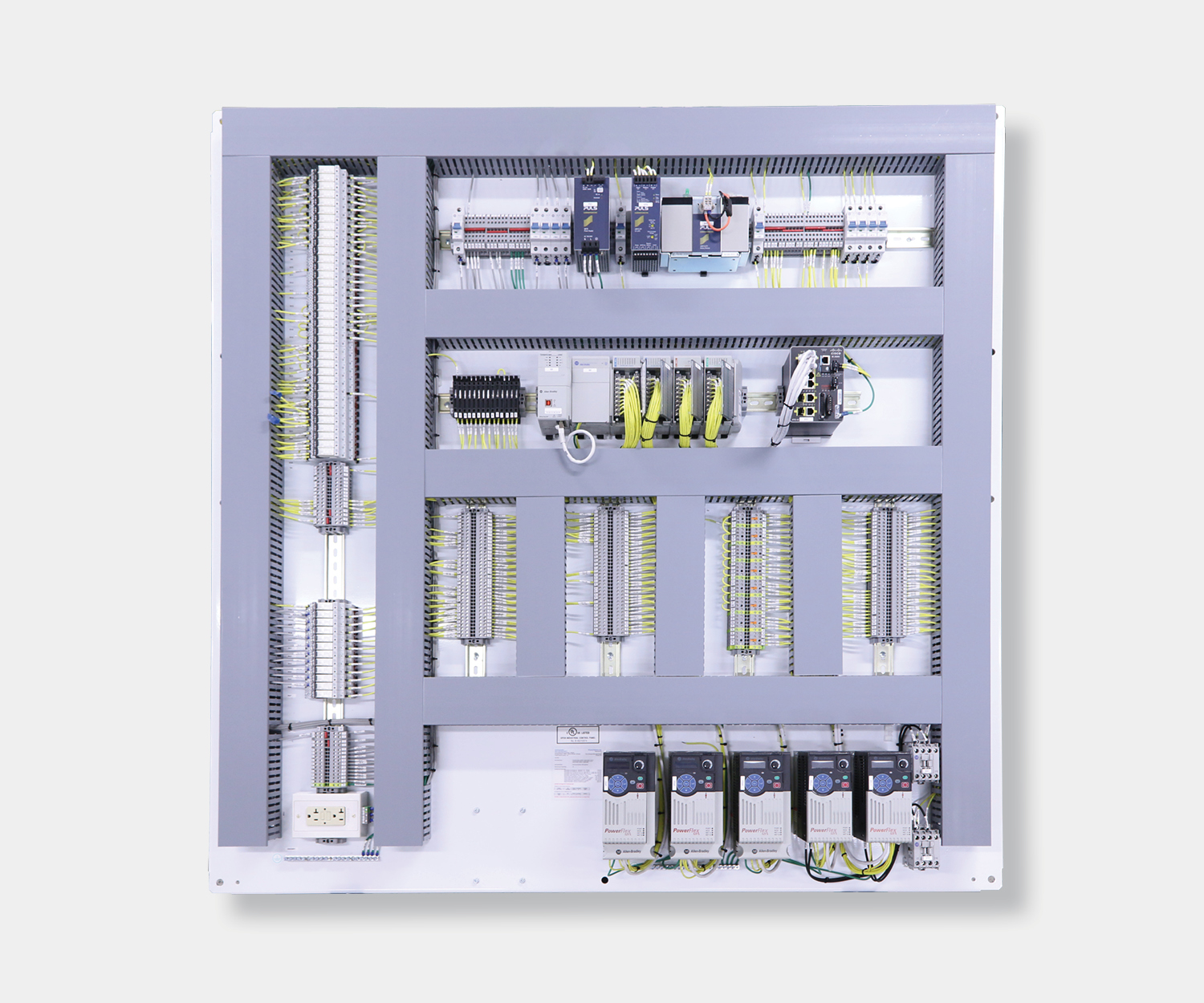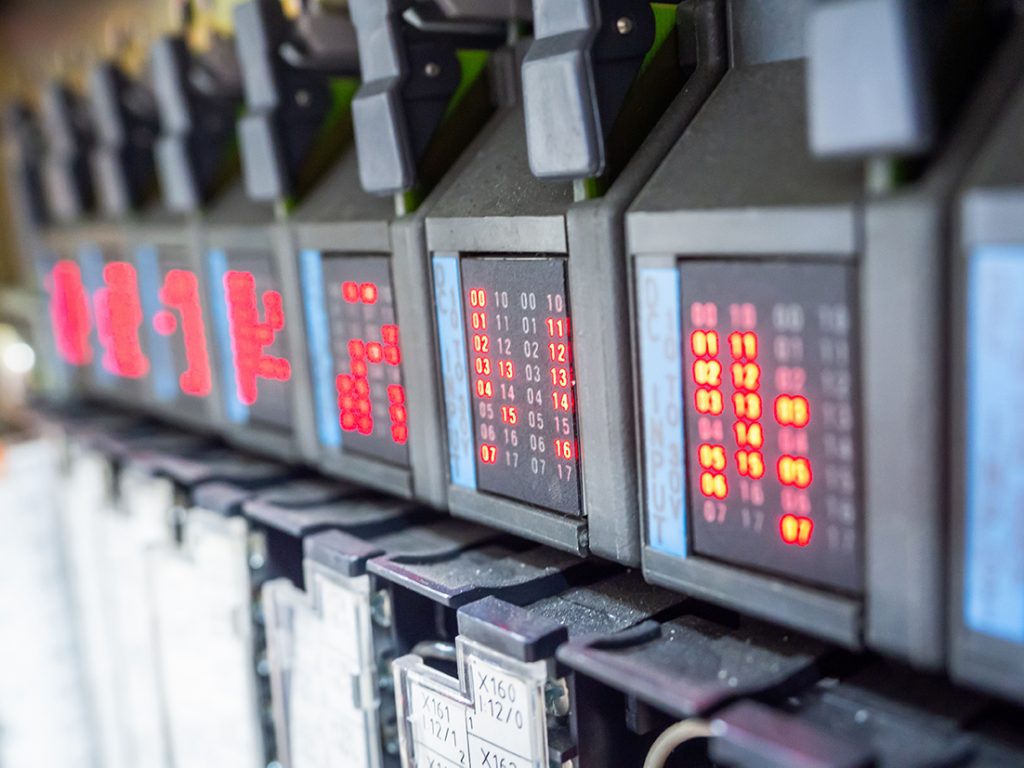
Programmable logic controllers (PLCs) serve as the backbone of modern manufacturing automation, transforming how industries approach process control and production efficiency. From aerospace facilities managing complex assembly lines to food and beverage plants ensuring consistent quality, PLCs enable manufacturers to automate critical processes while maintaining precise control over their operations.
What is a PLC? Simply put, a PLC is a ruggedized industrial computer designed to withstand harsh manufacturing environments while executing programmed control functions. These industrial control systems have evolved from basic relay replacements to sophisticated automation platforms capable of managing thousands of input/output points, integrating with robotic systems, and connecting legacy equipment with modern digital infrastructure.
As manufacturers face increasing pressure to modernize aging control systems, reduce unplanned downtime, and scale their automation capabilities, understanding the strategic role of PLCs becomes essential for operations managers, facilities engineers, and decision-makers planning their next automation investment.
PLC Applications Across Industries
The versatility of programmable logic controllers makes them indispensable across a range of sectors, each with unique automation challenges and requirements.
Aerospace and Defense Manufacturing In aerospace facilities, PLCs coordinate complex assembly processes involving precision tooling, environmental controls, and safety interlocks. These systems manage everything from composite curing ovens to automated material handling systems that move components through multi-stage production lines. The ability to integrate multiple PLC brands, such as Allen-Bradley and Siemens platforms within the same facility, provides the flexibility aerospace manufacturers need for equipment standardization across global operations.
Food and Beverage Production Food processing plants rely on PLCs to maintain consistent product quality while meeting strict FDA compliance requirements. These industrial control systems manage temperature control for pasteurization, conveyor speed regulation for packaging lines, and automated CIP (clean-in-place) sequences that ensure sanitary conditions between production runs.
Energy and Utilities Power generation facilities and utility companies use PLCs to control critical infrastructure including turbine operations, electrical grid switching, and environmental monitoring systems. The robust design of these controllers ensures reliable operation in challenging conditions while providing the real-time data necessary for grid stability and regulatory reporting.
Data Centers and Mission-Critical Facilities Modern data centers depend on sophisticated PLC-based systems to manage HVAC controls, backup power systems, and environmental monitoring. These applications often require integration of hundreds of I/O points and multiple motor-driven systems including cooling fans, compressors, and automated fire suppression equipment.
Process Control and Automation
The fundamental role of a PLC in manufacturing extends far beyond simple on/off control. Modern programmable logic controllers serve as the central nervous system for complex industrial control systems, processing thousands of data points while executing precise control algorithms in real-time.
An input device measures and transmits data from your system, such as a sensor, switch, thermometer, or relay. In contrast, output devices receive data or commands from the PLC to execute a specific function. For example, an input device may signal to the PLC that the pressure in a line is too high. The PLC would then automatically send a programmed command to the output device, which in this scenario is a valve, to open, effectively reducing the pressure.
Other actions controlled by a PLC can include turning on or off a motor to run a conveyor, raising or lowering temperature via a heat exchanger, or displaying an alarm or status on an HMI screen when abnormal system parameters occur.
In high-density I/O applications common in fulfillment centers and manufacturing facilities, a single PLC system might manage thousands of input and output points simultaneously. This includes coordinating motor control centers that operate conveyor systems, managing safety interlocks across multiple production zones, and integrating robotic material handling equipment with existing production equipment.
Modern PLC manufacturing environments often require multi-vendor integration capabilities. Rather than limiting facilities to a single automation platform, experienced integrators can design systems that leverage the strengths of different PLC brands, whether that’s Allen-Bradley for motor control applications, Siemens for process automation, or other specialized controllers for specific equipment requirements.
Data Collection, SCADA and Machine Monitoring
As mentioned above, PLCs monitor and collect data from connected inputs and machinery. Because of this, software programs, such as SCADA and Machine Monitoring systems, can connect to PLCs to process collected machine data and display useful information, such as production reports, live-trends, alarm notifications, OEE metrics, cycle or batch status, and more.
The integration of SCADA systems with PLCs becomes particularly valuable in facilities with distributed control architectures. Manufacturing operations spanning multiple buildings or production areas can centralize monitoring and control through SCADA interfaces that communicate with PLCs across the facility network. This centralized approach enables operators to identify inefficiencies, coordinate production schedules, and respond to equipment issues before they impact overall throughput.
For facilities managing legacy automation equipment alongside modern systems, PLCs serve as translation layers that enable older equipment to participate in modern data collection and analysis programs. This capability extends the useful life of existing machinery while providing the data visibility necessary for continuous improvement initiatives.
With the information visualized, managers and operators can better analyze their production performance and make data-driven decisions to improve efficiency and output. Additionally, the ability to receive immediate alarm notifications allows operators to respond more quickly to diagnose and remedy problems, which can reduce downtime and costs.
IIoT and Industrial Machine Learning Integration
IIoT applications and industrial machine learning algorithms represent the next evolution in manufacturing automation, with PLCs serving as the critical data foundation for these advanced technologies.
Industrial Machine learning algorithms work by improving themselves through experience. To gain the necessary experience, machine learning algorithms study production data collected by PLCs to find patterns, which enables the algorithms to make predictions and decisions without needing to be pre-programmed. The result is a system that can provide predictive maintenance and remaining useful life information to prevent downtime, propose responses to issues that may arise, and improve quality control with actionable production insights.
The success of these advanced applications depends heavily on the quality and consistency of data collection at the PLC level. Facilities with well-designed industrial control systems that capture comprehensive operational data create the foundation for successful IIoT implementations. This includes not just basic process variables, but also equipment performance metrics, energy consumption patterns, and maintenance indicators that feed predictive analytics algorithms.
For manufacturers planning to implement Industry 4.0 initiatives, ensuring their PLC infrastructure can support future connectivity requirements becomes a strategic consideration. This often involves evaluating current communication protocols, network security capabilities, and the ability to integrate new technologies without disrupting existing production operations.
Maximizing Your Manufacturing Automation Investment
PLCs have evolved from simple relay replacements to sophisticated platforms that enable modern manufacturing excellence. Whether you’re planning to modernize legacy control systems, integrate new production equipment, or scale existing automation capabilities, the strategic implementation of industrial control systems can deliver significant improvements in efficiency, reliability, and operational visibility.
The key to successful PLC manufacturing projects lies in partnering with experienced integrators who understand both the technical requirements and business objectives driving your automation investment. From managing complex multi-vendor environments to designing scalable architectures that support future growth, the right integration approach can transform your operational capabilities while protecting your technology investment.
Located near Seattle, Washington, Process Solutions has over 30 years of experience providing high quality and reliable control systems. With over 100 engineers and technicians on staff and an output of over 3,000 industrial control panels per year, Process Solutions is the Northwest largest control systems integrator. In addition to custom control panel design, build and commissioning, Process Solutions’ control systems services include PLC and HMI programming, robot system integration, energy management and refrigeration systems, SCADA software design, and DAQuery machine monitoring software.
Ready to evaluate your current control system infrastructure and explore modernization opportunities? Request a complimentary automation assessment to identify improvement opportunities and develop a strategic roadmap for your next PLC integration project. Our experienced engineers will review your existing systems, understand your operational goals, and provide recommendations tailored to your specific manufacturing environment.
Frequently Asked Questions
Q: What is the difference between PLCs and microcontrollers in manufacturing?
PLCs are designed for industrial environments with ruggedized hardware, extensive I/O capabilities, and programming languages specifically for automation applications. Microcontrollers are general-purpose devices better suited for embedded applications with simpler control requirements.
Q: How do you integrate different PLC brands in the same facility?
Multi-vendor PLC integration requires expertise in communication protocols like OPC UA, Modbus, and Ethernet/IP to enable data exchange between Allen-Bradley, Siemens, and other platforms. Experienced integrators design unified networks that leverage each platform’s strengths while maintaining system-wide coordination.
Q: What are the signs that your manufacturing facility needs PLC modernization?
Key indicators include frequent unplanned downtime, difficulty finding replacement parts for obsolete equipment, inability to collect production data, and challenges integrating new equipment with existing control systems. Rising maintenance costs and limited expansion capabilities also signal the need for modernization.
Q: How long does a typical PLC integration project take?
Project timelines vary based on complexity, but most industrial control system integrations range from 6-16 weeks depending on the scope of work, number of I/O points, and integration requirements. Custom control panel fabrication typically adds 6-8 weeks to the overall timeline.
Q: What maintenance is required for PLC-based control systems?
Regular maintenance includes battery replacement, backup verification, I/O point testing, and software updates. Predictive maintenance programs can identify potential issues before they cause downtime, while proper documentation ensures efficient troubleshooting and system modifications
